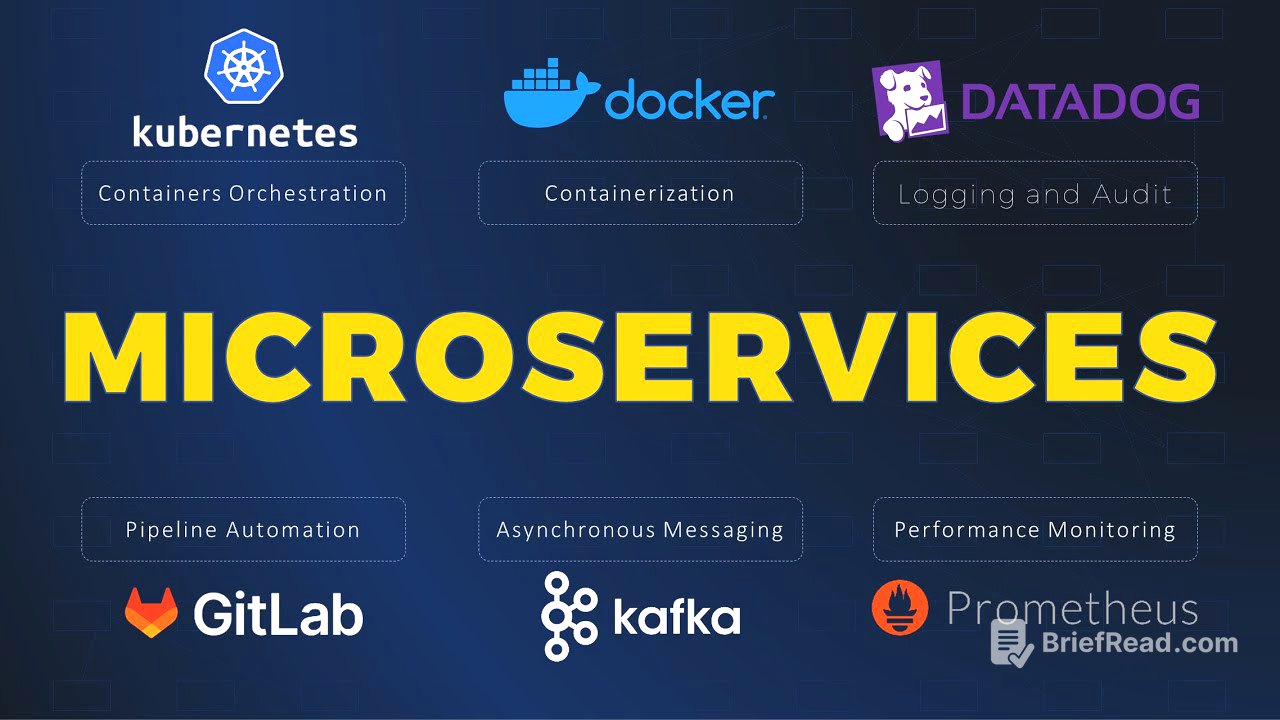TLDR;
This video explains the evolution of application design from monolithic to multi-tier to microservices architectures. It highlights the challenges of monolithic and multi-tier architectures in handling complex applications and how microservices address these challenges by decomposing applications into smaller, independent services. The video also discusses the complexities introduced by a large number of microservices and the tools used to manage them, such as containerization, orchestration, and monitoring tools. It concludes by noting that microservices are not a universal solution and are best suited for complex, evolving applications.
- Microservices address the limitations of monolithic and multi-tier architectures.
- Complexity is managed by decomposing applications into smaller, independent microservices.
- Tools like containerization and orchestration help manage the complexity of microservices-based systems.
Introduction to Microservices [0:01]
Microservices are presented as an architectural approach designed to overcome the limitations of older application designs. The video sets the stage by outlining the progression from monolithic to multi-tier and finally to microservices-based architectures, framing microservices as a response to the challenges posed by increasingly complex applications. This introduction emphasizes the need for a new paradigm to handle the demands of modern, large-scale systems.
From Monolithic to Multi-Tier Architecture [0:24]
The video describes the monolithic architecture as a simple, all-in-one code model where data storage, business logic, and user interface are encapsulated in a single unit. While straightforward for simple applications, this model becomes difficult to maintain, evolve, and scale as complexity grows. The multi-tier architecture is introduced as a solution, separating application components into layers based on technical functions, with the three-tier architecture being a common model consisting of presentation, logic, and data layers.
Challenges with Complex Applications [1:52]
The video addresses the challenges associated with complex applications, emphasizing the exponential growth in application complexity due to the rise of web and mobile applications. Maintaining, evolving, and scaling complex applications like Amazon or Google requires a design paradigm shift. The best way to tackle complexity is by decomposing it into manageable chunks.
Microservices Architecture [2:25]
Microservices architecture involves breaking apart the logic and data layers into smaller, independent units called microservices. Each microservice handles one business function end-to-end, independently from other microservices. Microservices communicate through simple APIs and lightweight protocols like HTTP or message queues. Different teams can work separately on different microservices, building new functions and evolving business capabilities without impacting other teams.
Complexity and Tools for Microservices [3:32]
As the number of microservices grows, complexity can creep back in, potentially leading to cascading outages if a microservice fails. The software engineering community has created tools to manage this complexity, including containerization (e.g., Docker), container orchestration systems (e.g., Kubernetes), pipeline automation for CI/CD, asynchronous messaging with message brokers, application performance monitoring tools, and logging/audit tools.
Conclusion: Microservices Are Not a Magic Bullet [4:51]
The video concludes by stating that microservices are not a universal solution for all application design problems. Applications are still designed as monolithic when they are relatively simple, with a limited number of users, and not fast-evolving. Highly distributed systems are inherently complex.









